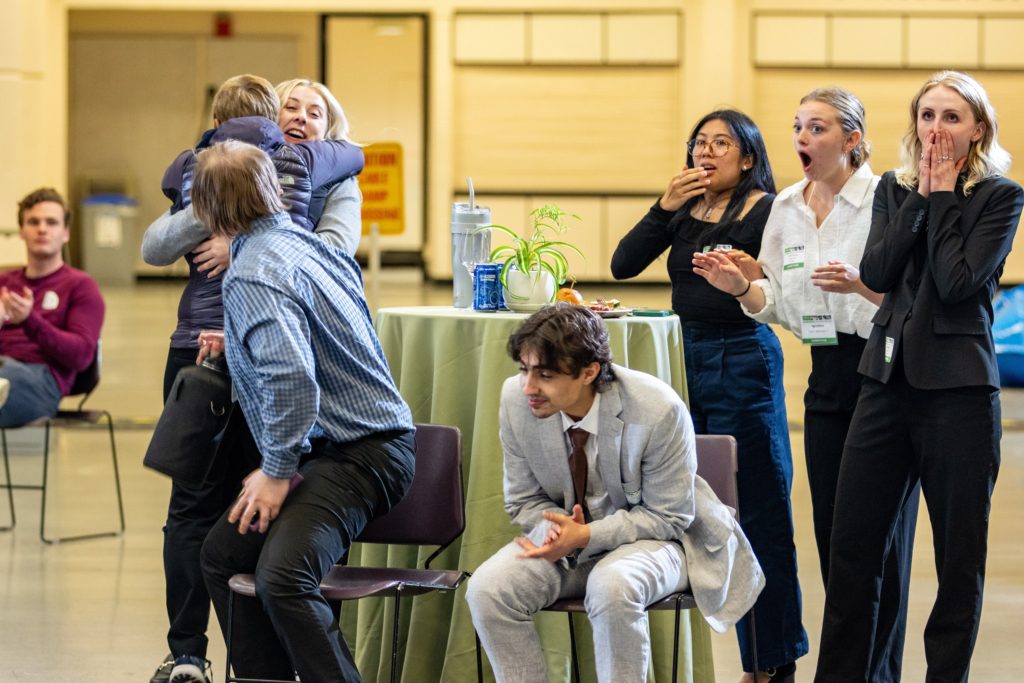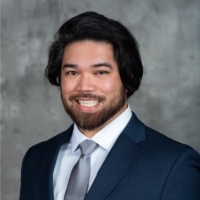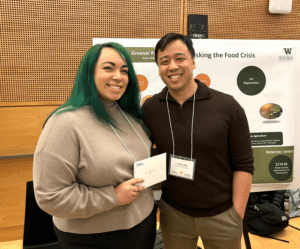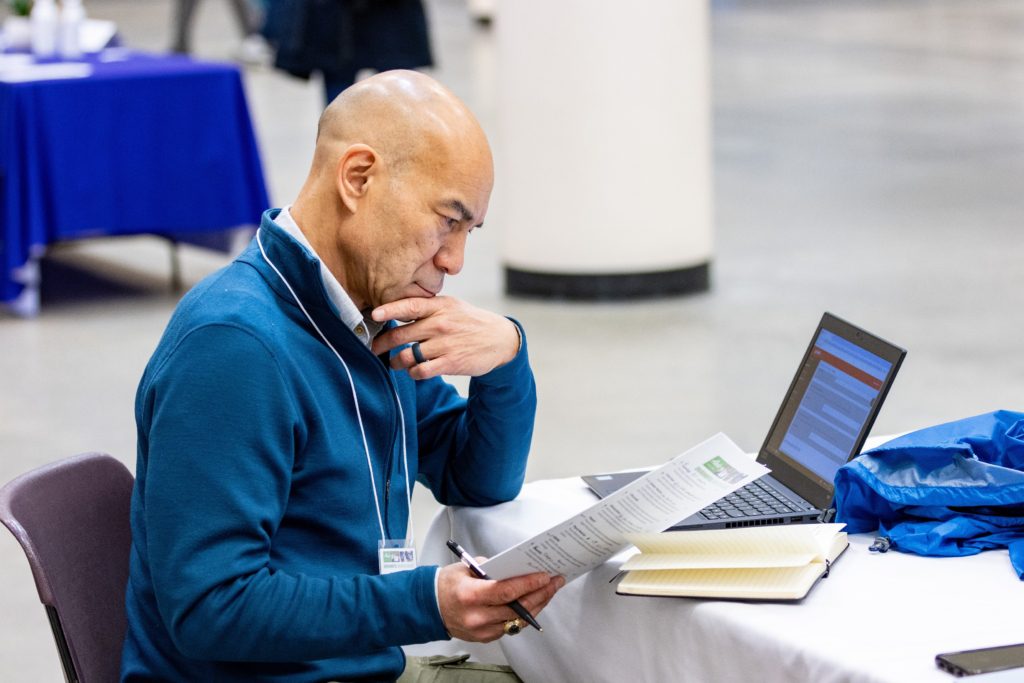
AgroFilms, a team of students from University of Washington’s Bioresource Science and Engineering, College of the Environment, and Foster School of Business, reacts to news that they took the $15,000 grand prize at the Alaska Airlines Environmental Innovation Challenge held last week at the Foster School. The challenge is now in its 16th year. Courtesy photo
The problem: 15,000 metric tons of plastic agriculture mulch end up in landfills and oceans every year. That’s enough to fill nearly 300 Olympic-sized swimming pools.
The solution (or at least one possible solution): A biodegradable mulch sheet that can be tilled back into the soil after harvest, eliminating the need for farmers to remove plastic mulch at the end of the growing season.
AgroFilms, which uses industrial hemp waste to make its biodegradable sheet, grew out of an idea at the University of Washington’s Bioresource Science and Engineering department. It is being built by a team of undergrads, master students, and advisors from a mix of UW departments, including the Foster School of Business.

Mike Costales, Foster MBA ’24
And, on March 28, it took home the $15,000 grand prize at the Alaska Airlines Environmental Innovation Challenge.
Though Mike Costales, MBA ‘24, came to the team late, he brought with him skills learned in his Foster Technology Management MBA: finance, economics, competitive strategy, and marketing. After graduating in June, he hopes to build a career in strategic planning, possibly with AgroFilms. He has two very good reasons for wanting to stay in the sustainability space:
“My wife and I have a 7-year old and a 4-year old. I want them to have a better place to live in, and I would love to work in a role where I can make a positive impact,” Costales tells P&Q.
TACKLING ENVIRONMENTAL CHALLENGES THROUGH A BUSINESS LENS
Foster’s Environmental Innovation Challenge (EIC) was created 16 years ago, well before sustainability became a staple for business school master plans around the world.
It was founded through Foster School’s Buerk Center for Entrepreneurship, a Foster staple for three decades. An entrepreneurship program centered on environmental challenges made perfect sense, says Amy Sallin, director of the Buerk Center.
The University of Washington already had strong engineering, environmental and applied science programs who were tackling environmental problems. Plus, more and more teams in the center’s business plan competition were tackling environmental challenges through a business lens.
“We’re in the Northwest. We’re environmentally minded,” Sallin says. “When you bring that together, it was absolutely the right way to go.”
The EIC is open to students from all disciplines and majors from all levels of study – undergraduates, MBAs, master’s students. These may be students working on an environmental solution as a capstone project or through laboratory research, but who aren’t necessarily thinking about the business implications of their idea. The EIC was deliberately designed as a challenge, not a competition, to guide them through the business process if that’s what they desire. Foster school undergrads and MBAs can offer teams insight into market strategy, sizing up the competition, a workable business plan and more.

Lukas and Tawni Rodriguez Ng, founders of Greener Pastures. Courtesy photo
Take husband-and-wife team Lukas Ng and Tawni Rodriguez Ng, founders of Greener Pastures which competed last week in the EIC. He is a Technology Management MBA at Foster while she is a UW undergrad majoring in biology.
Greener Pastures is creating seeds with a mixture of mycorrhiza, bacteria, nutrients, and nearly 300 species of fungi to create an underground micro ecosystem to create higher crop yields with less water, fertilizer, and labor. It hopes to simultaneously transform soil into one of Earth’s greatest carbon captures.
The couple got the idea after a dinner discussion about regenerative agriculture with their team advisor, David Bergvinson, founder of Be Sustainable By Design. Bergvinson previously spent 8 years with the Bill & Melinda Gates Foundation working on agricultural innovations to improve nutrition and seed programs.
“Tawni and I could not get the problem of the world’s soil at major risk of degradation out of our heads. I was unaware how conventional agriculture is killing the planet,” Ng tells P&Q. “That concern turned into a brainstorming session, then a business plan, then the Science & Technology showcase. And before you know it, the EIC!”
Ng plans to build out Greener Pastures with the rest of his team after completing his MBA.
“If we, as students/professionals/entrepreneurs do not actively consider sustainability, then who will? If all of us do not actively consider either working in sustainability or considering the impact of sustainability to some extent, then there may not be a future where we are around to have careers.”
SCIENCE FAIR MEETS TRADESHOW
EIC is open to teams from Washington, Oregon, Idaho, Alaska and British Columbia. This year, 42 student teams from 10 different colleges and universities submitted applications and judges selected 22 finalist teams. Finalists gathered March 28 to give their 60-second pitch and to set up booths for Demo Day, a sort of “science fair-meets-tradeshow,” says Lauren Brohawn, manager of the Environmental Innovation Challenge.
Judges reflect the same level of background diversity as the student teams. They are investors, entrepreneurs, attorneys, manufacturers, and industry experts from all different areas of climate and sustainability. They peruse the challenge booths and drill students on their solution’s environmental impact, science, and business strategy.

A judge of Foster’s Environmental Innovation Challenge tallies scores at last week’s competition. They awarded $42,000 in non-dilutive funding to innovation solutions to environmental challenges. Courtesy photo
This year, judges awarded $42,000 in prize money. After AgroFilms’ grand prize finish, C-1 Bio took home the $10,000 Herbert B. Jones Foundation Second Place Prize as well as the $2,500 Eric Carlson Best Idea For Climate Impact Prize. C-1’s technology converts carbon dioxide emissions from industrial waste into valuable chemicals.
Other winners include:
- Mimimycelium won the $5,000 Alaska Airlines Third Place Prize for its novel use of mushrooms to decompose and convert plastic into organic matter.
- SuperSurya won the $5,000 Clean Energy Institute Clean Energy Prize for its innovative approach to increasing energy efficiency of residential solar power.
- SEAPEN won the $2,500 Leo Cup Innovation in Oceanography Prize for its oceanographic computer vision tools, enabling effective analysis of marine data to address critical environmental challenges.
- Green Rush won a $1,000 Connie Bourassa-Shaw Spark Award for its process of using a flowering aquatic plant to clean up hazardous open pit mines.
- BioNova won a $1,000 Connie Bourassa-Shaw Spark Award for developing bioreactors that produce methane bio-gas and high-quality fertilizer for local communities in Zimbabwe and Peru.
Brohawn believes a couple of things set the EIC apart from other business school competitions. First, prize money is non-dilutive, meaning that Foster or the Buerk Center do not take equity in the idea. Second is all about location.
“Think about where we physically are in the region. Seattle is an amazing setting: We’ve got Puget Sound, we have the mountains, people are out skiing, they’re fishing. There’s already that connection to the environment just because of where we are. I think similar things can be said about Alaska, Idaho, Oregon,” she says.

AgroFilms proposes to use industrial hemp waste to produce a biodegradable mulch sheet that can be tilled back into the soil after harvest, eliminating the need for farmers to remove plastic mulch at the end of the growing season. Courtesy photo
ENVIRONMENTAL IMPACT
Sustainability impact is notoriously difficult to measure, although it is getting better. And, fact is, most startups or even great business ideas fail to materialize. So, not all of the solutions presented in the Environmental Innovation Challenge end up making it to market.
But, anecdotally, Sallin and Brohawn hear about challenge finalists starting something totally new and running with it later in their careers. They call these the “accidental entrepreneurs,” and several come back to UW as EIC judges or mentors.
Other challenge competitors are out there raising money and putting their solutions to work. Take Membrion, Inc., a Seattle-based startup that participated in the EIC almost a decade ago. It went on to win the Buerk Center’s Business Plan Competition and joined the Jones + Foster Accelerator. While the solution has evolved overtime, the company now uses ceramic membranes to filter out poisonous heavy metals from industry waste water. It is in the middle of its Series B funding and, in January, was named Top Innovator of the World Economic Forum’s Zero Water Waste Challenge. In March, it made Time Magazine’s list of the America’s Top Greentech Companies.

Christian Primack Metcalfe
Still others are attempting a comeback. Korvata, co-founded in 2014 by then Foster MBA Christian Primack Metcalfe and now an entrepreneur and affiliate instructor in entrepreneurship at the business school, started as an idea to help companies cut their nitrous oxide emissions through aerosol products. Metcalfe learned that making whipped cream accounted for more than 10% of Starbucks’ emissions during an entrepreneurial innovation practicum course. Korvata created an alternative.
Korvata won the $10,000 Environmental Innovation Challenge grand prize in 2014. The success encouraged the team to continue working to build out the company, and quickly raised about $400,000.
“As a former competitor and member of the Foster Faculty, I believe competitions like the EIC play an important role to help students focus their energies and passions on entrepreneurial activities and to practice entrepreneurship outside the classroom. While some companies do emerge from academic competitions, I believe their success is measured by the number of students, judges, and mentors they bring together,” Metcalfe says.
While Korvata initially targeted whipped cream canisters, after about a decade, the founders realized the market wasn’t robust enough to support their business model. They joke that through the process they “accidentally” discovered a new way to fill nearly all aerosol products much more efficiently. They have recently been granted several patents on the tech and are in the process of restarting the company to bring the innovation to market.
“For MBA students, being an entrepreneur can be an uncelebrated, lonely and daunting pursuit. The Foster School of Business does an outstanding job investing in, supporting and nurturing its entrepreneurs. I will be forever grateful to Foster and its Buerk Center for Entrepreneurship for all of the support, kindness, encouragement and resources they have provided me,” Metcalfe says.
DON’T MISS: 100 BEST & BRIGHTEST UNDERGRADUATE BUSINESS MAJORS OF 2024 AND PRME LAUNCHES VAST DIGITAL LIBRARY OF B-SCHOOL SUSTAINABILITY RESOURCES











Questions about this article? Email us or leave a comment below.